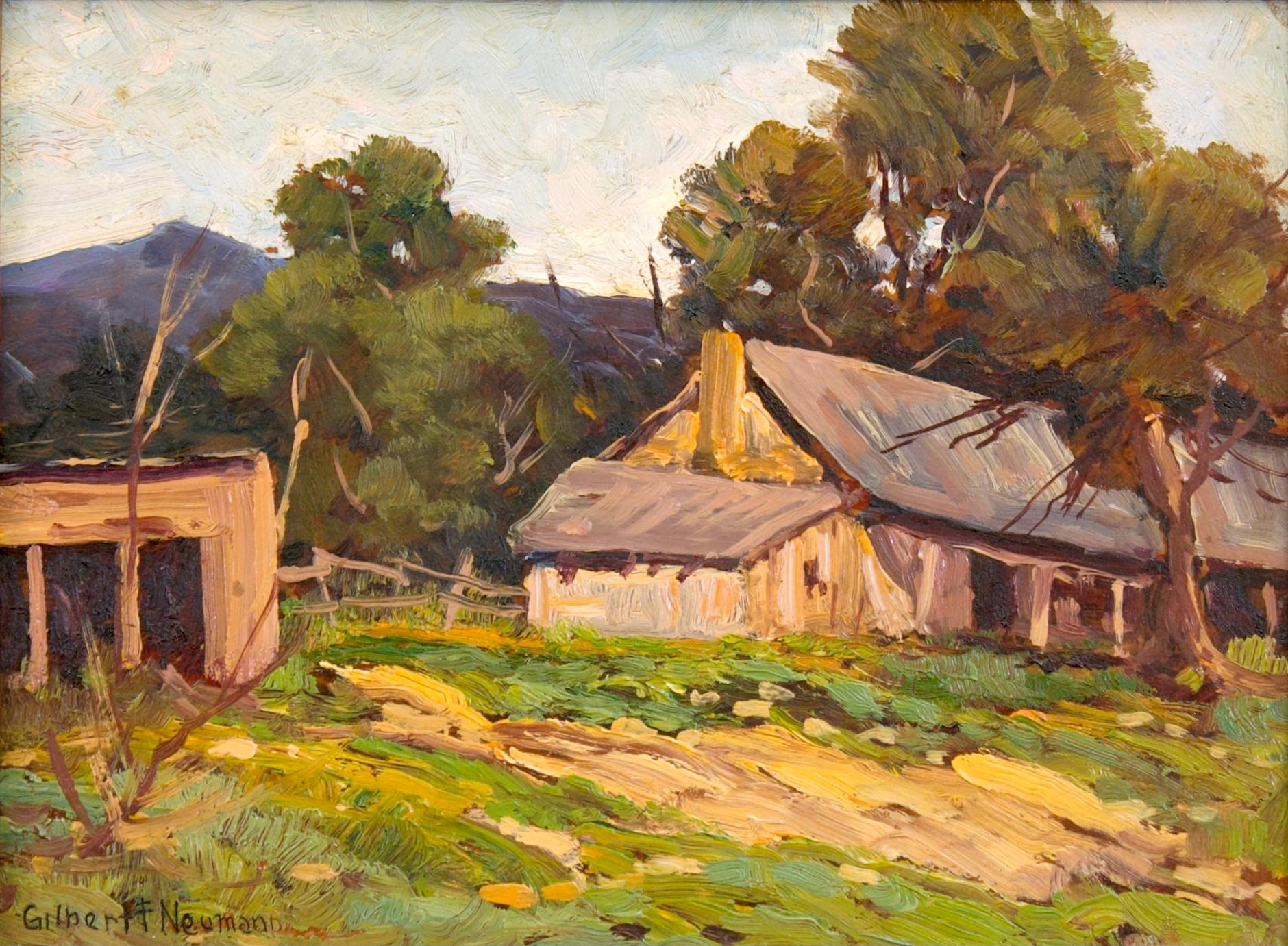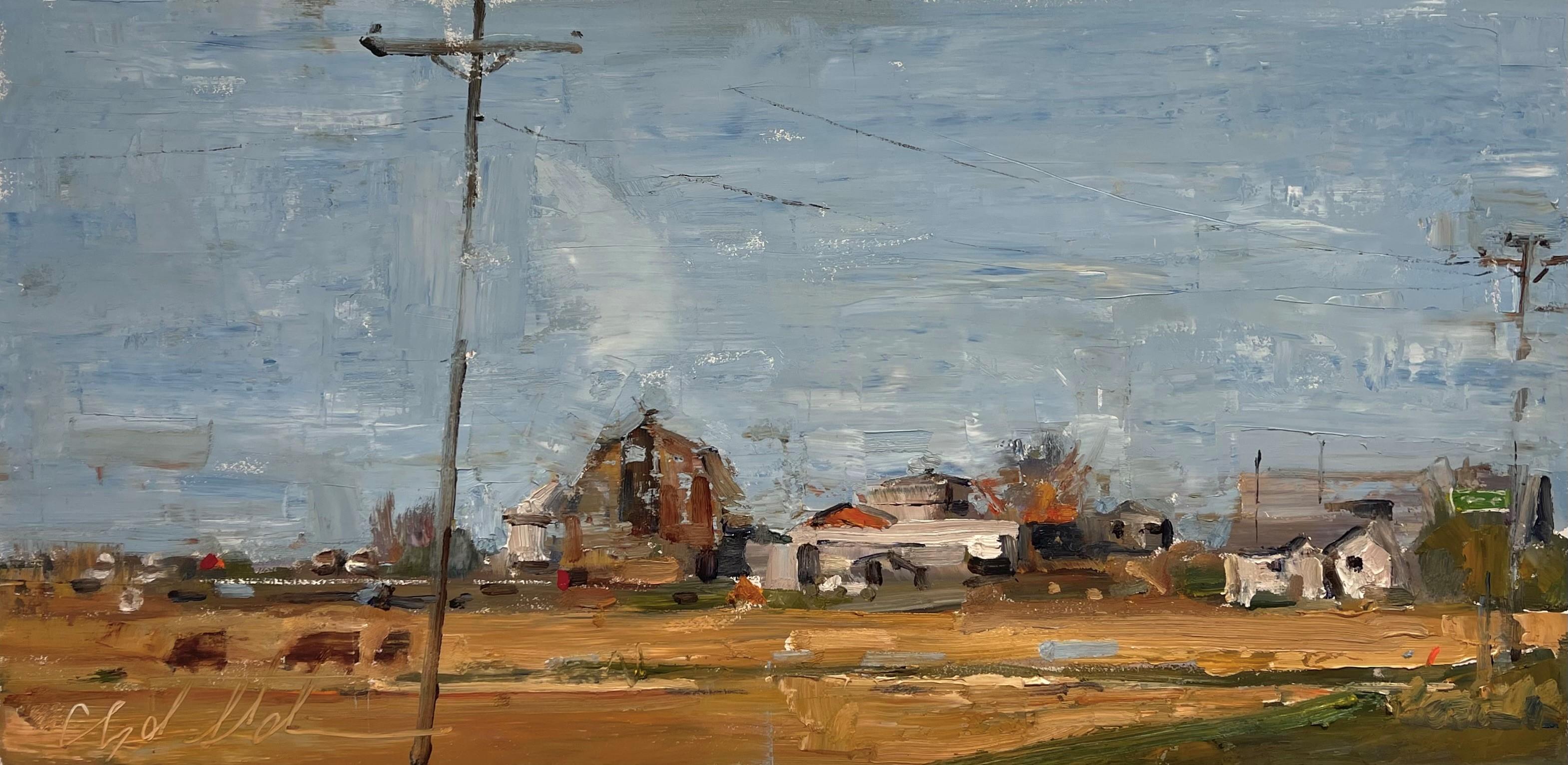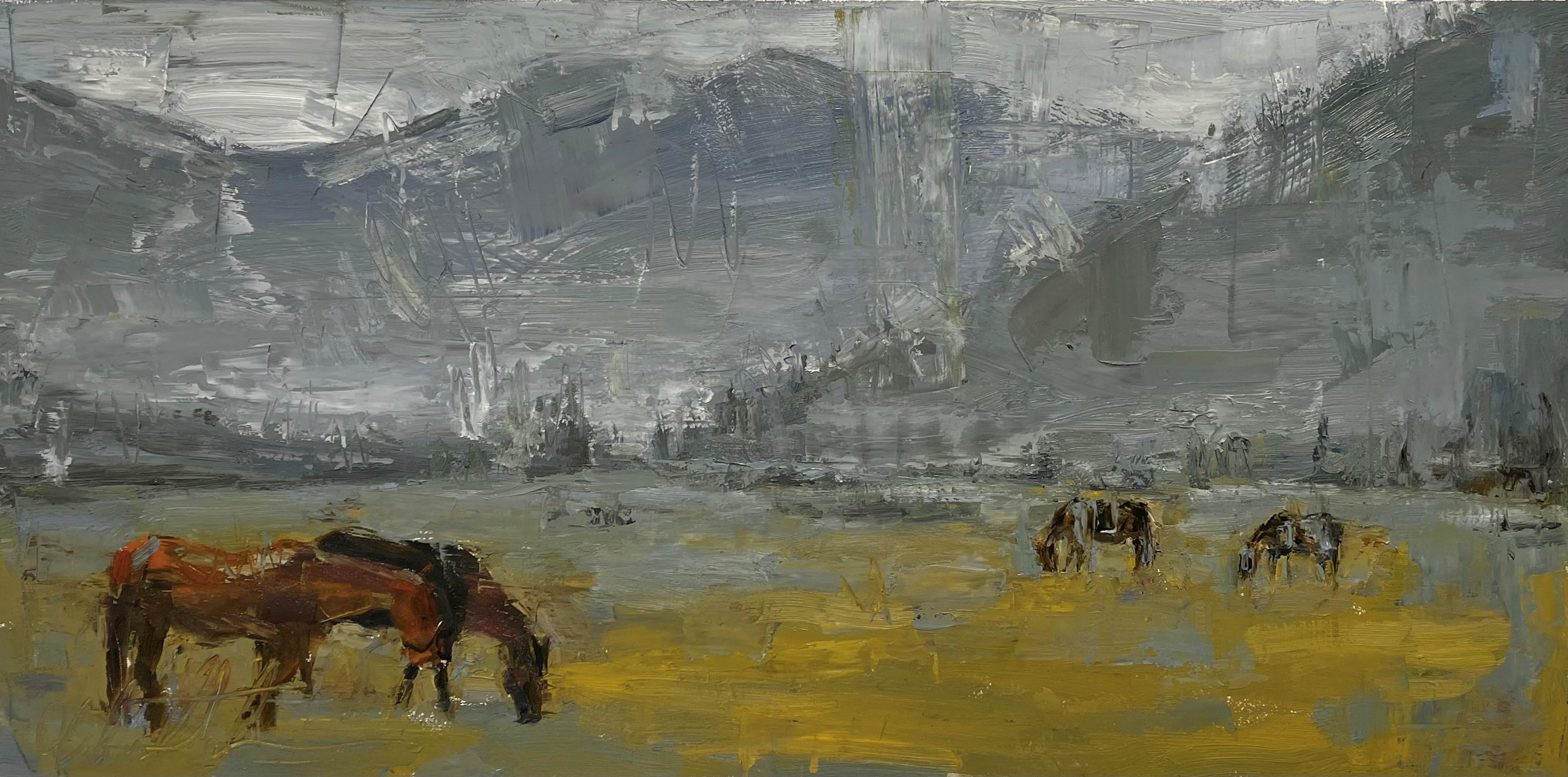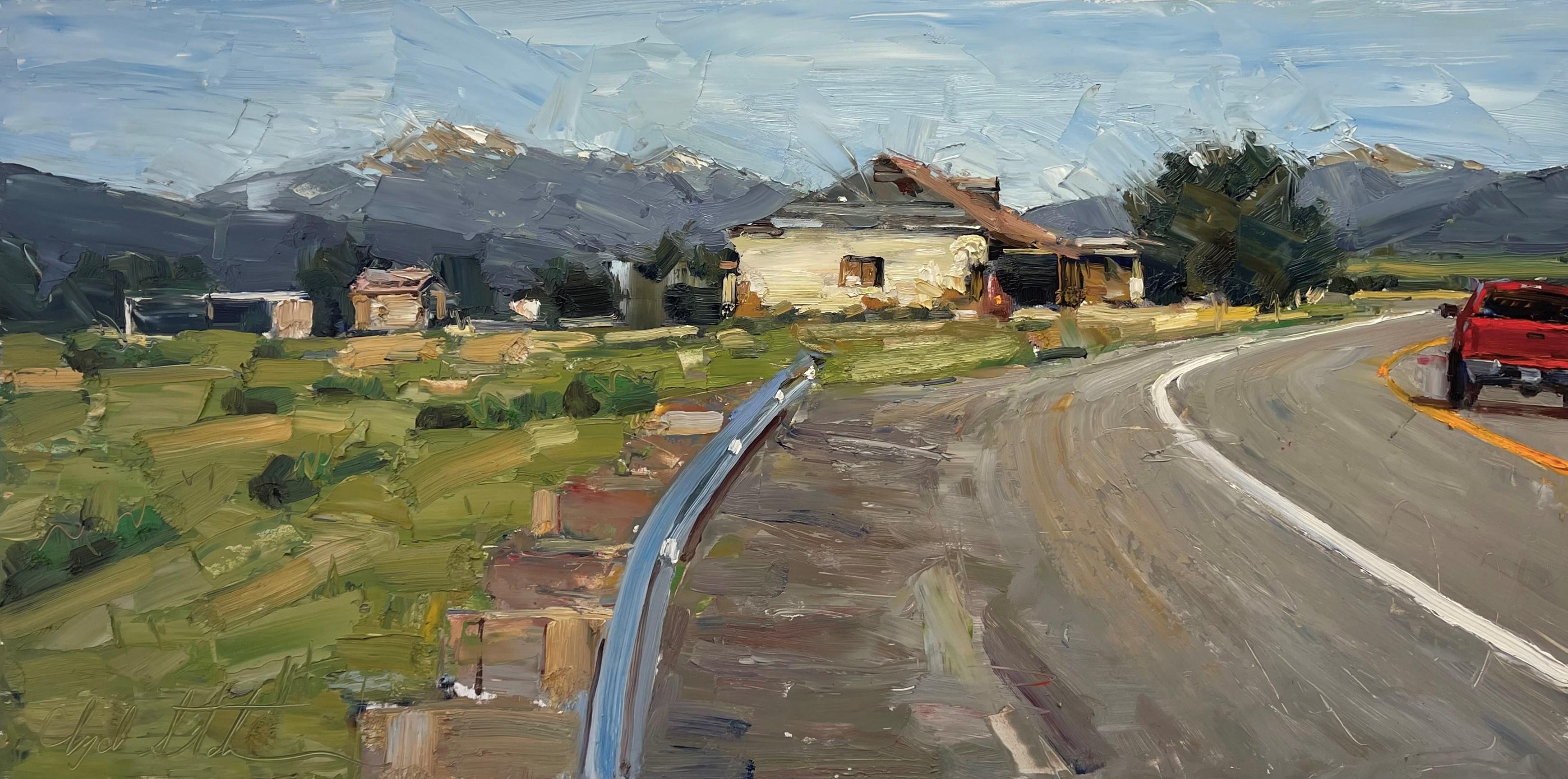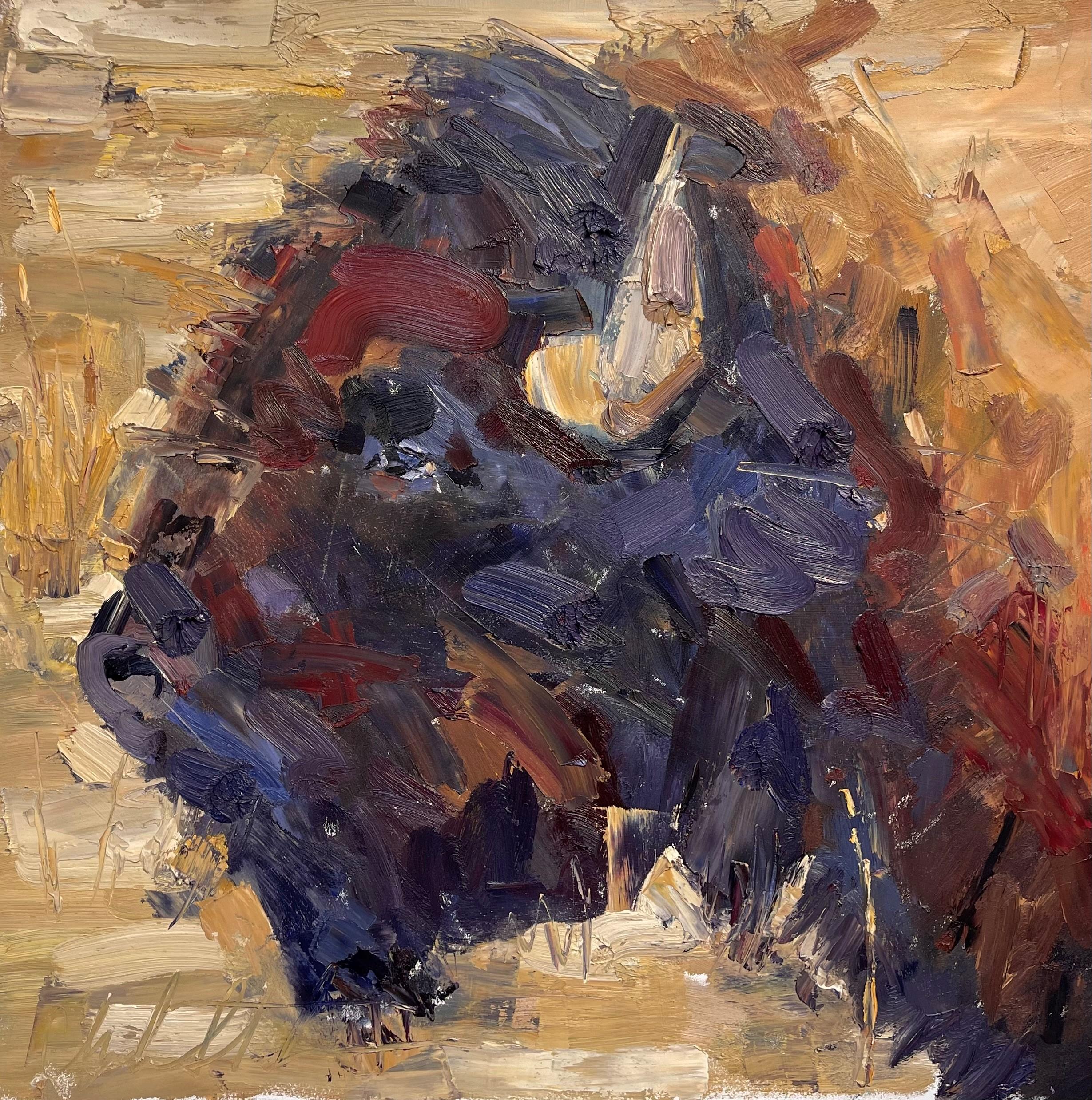Items Similar to "The Floor We Live in"
Want more images or videos?
Request additional images or videos from the seller
1 of 5
Hayley Lever"The Floor We Live in"1939
1939
About the Item
Jim’s of Lambertville is proud to offer this artwork.
Signed and dated lower right.
Hayley Lever (1876-1958)
Hayley Lever's exceptional career path took him from the shores of his native Australia to those of England, and then the United States. Described as an artist of "individuality," he refused to ally himself with any particular style or movement; rather, guided by his belief that "art is the re-creation of mood in line, form and color," he incorporated the precepts of Realism, Impressionism, Tonalism and Post-Impressionism into his art, applying those strategies in accordance with the emotion and aesthetic affect he wished to convey. In America, where he achieved his greatest acclaim, he was viewed as a proto-modernist, lauded by critics such as Edgar Holger Cahill, who declared:
"in all his painting, whether it is of boats dancing on the waters of the Cornish coast, the ferry bridges and boats and streets of Gloucester, Massachusetts, the steaming asphalt highways of New York City, or the gently upheaving Catskills about Woodstock, it is always Lever who addresses us."
Hayley Lever was born on September 28, 1875 in Bowden Tannery, a suburb of Adelaide, Australia. The son of Albion W. Lever and his wife, Catherine (Hayley) Lever, he was christened Richard, but as a professional artist he used his second and last names only.
- Creator:Hayley Lever (1876-1958, American)
- Creation Year:1939
- Dimensions:Height: 16 in (40.64 cm)Width: 14 in (35.56 cm)Depth: 2 in (5.08 cm)
- Medium:
- Movement & Style:
- Period:
- Condition:
- Gallery Location:Lambertville, NJ
- Reference Number:
About the Seller
5.0
Vetted Seller
These experienced sellers undergo a comprehensive evaluation by our team of in-house experts.
Established in 1997
1stDibs seller since 2014
36 sales on 1stDibs
Typical response time: 6 hours
- ShippingRetrieving quote...Ships From: Lambertville, NJ
- Return PolicyThis item cannot be returned.
More From This SellerView All
- "Clouds for Autumn"By Peter SculthorpeLocated in Lambertville, NJJim’s of Lambertville is proud to offer this artwork by: Peter Sculthorpe (born 1948) Peter Sculthorpe was born in Ontario, Canada, in 1948. His talent was evident even as a chi...Category
21st Century and Contemporary American Impressionist Landscape Paintings
MaterialsOil, Panel
- "Up the Valley"By Daniel GarberLocated in Lambertville, NJIn an original Harer frame. Illustrated in "Daniel Garber Catalogue Raisonne" Vol. II, pg. 271, and in book titled "Blue Chips", pg. 33 Jim’s of Lambertville is proud to offer this artwork by: Daniel Garber (1880-1958) One of the two most important and, so far, the most valuable of the New Hope School Painters, Daniel Garber was born on April 11, 1880, in North Manchester, Indiana. At the age of seventeen, he studied at the Art Academy of Cincinnati with Vincent Nowottny. Moving to Philadelphia in 1899, he first attended classes at the "Darby School," near Fort Washington; a summer school run by Academy instructors Anshutz and Breckenridge. Later that year, he enrolled at the Pennsylvania Academy of the Fine Arts. His instructors at the Academy included Thomas Anshutz, William Merritt Chase and Cecilia Beaux. There Garber met fellow artist Mary Franklin while she was posing as a model for the portrait class of Hugh Breckenridge. After a two year courtship, Garber married Mary Franklin on June 21, 1901. In May 1905, Garber was awarded the William Emlen Cresson Scholarship from the Pennsylvania Academy, which enabled him to spend two years for independent studies in England, Italy and France. He painted frequently while in Europe, creating a powerful body of colorful impressionist landscapes depicting various rural villages and farms scenes; exhibiting several of these works in the Paris Salon. Upon his return, Garber began to teach Life and Antique Drawing classes at the Philadelphia School of Design for Women in 1907. In the summer of that same year, Garber and family settled in Lumbertville, Pennsylvania, a small town just north of New Hope. Their new home would come to be known as the "Cuttalossa," named after the creek which occupied part of the land. The family would divide the year, living six months in Philadelphia at the Green Street townhouse while he taught, and the rest of the time in Lambertville. Soon Garber’s career would take off as he began to receive a multitude of prestigious awards for his masterful Pennsylvania landscapes. During the fall of 1909, he was offered a position to teach at the Pennsylvania Academy as an assistant to Thomas Anshutz. Garber became an important instructor at the Academy, where he taught for forty-one years. Daniel Garber painted masterful landscapes depicting the Pennsylvania and New Jersey countryside surrounding New Hope. Unlike his contemporary, Edward Redfield, Garber painted with a delicate technique using a thin application of paint. His paintings are filled with color and light projecting a feeling of endless depth. Although Like Redfield, Garber painted large exhibition size canvases with the intent of winning medals, and was extremely successful doing so, he was also very adept at painting small gem like paintings. He was also a fine draftsman creating a relatively large body of works on paper, mostly in charcoal, and a rare few works in pastel. Another of Garber’s many talents was etching. He created a series of approximately fifty different scenes, most of which are run in editions of fifty or less etchings per plate. Throughout his distinguished career, Daniel Garber was awarded some of the highest honors bestowed upon an American artist. Some of his accolades include the First Hallgarten Prize from the National Academy in 1909, the Bronze Medal at the International Exposition in Buenos Aires in 1910, the Walter Lippincott Prize from the Pennsylvania Academy and the Potter Gold Medal at the Art Institute of Chicago in 1911, the Second Clark Prize and the Silver Medal from the Corcoran Gallery of Art for “Wilderness” in 1912, the Gold Medal from the Panama-Pacific Exposition in San Francisco of 1915, the Second Altman Prize in1915, the Shaw prize in 1916, the First Altman Prize in 1917, the Edward Stotesbury Prize in1918, the Temple Gold Medal, in 1919, the First William A...Category
1940s American Impressionist Landscape Paintings
MaterialsPanel, Oil
- "Study for Lone House"By John R. GrabachLocated in Lambertville, NJJim’s of Lambertville is proud to offer this artwork. Signed lower center. Complemented by hand carved frame. John R. Grabach (1886 - 1981) John Grabach was a high...Category
20th Century American Impressionist Landscape Paintings
MaterialsOil, Board
- "Canal Bend"By Evelyn FahertyLocated in Lambertville, NJJim’s of Lambertville is proud to offer this artwork. Signed lower right. Evelyn Faherty (1919-2015) Evelyn Faherty was born in the early 20th century and made her home in Yardley, Pennsylvania. She is a Bucks County Impressionist...Category
20th Century American Impressionist Landscape Paintings
MaterialsOil, Board
- "Hills of Carmel"By George William SotterLocated in Lambertville, NJJim’s of Lambertville is proud to offer this artwork. Signed Lower Right George W. Sotter (1879-1953) George W. Sotter is remembered for painting the scenic towns, farms, mills a...Category
1940s American Impressionist Landscape Paintings
MaterialsOil, Board
- "The Bridge to Stockton"By Alice B. SotterLocated in Lambertville, NJJim’s of Lambertville is proud to offer this artwork. Complemented by original Ben Badura Frame Illustrated in "New Hope for America Art" page 499 Sig...Category
20th Century American Impressionist Landscape Paintings
MaterialsOil, Board
You May Also Like
- Old House, Built in 1848By Gilbert NeumannLocated in Austin, TX"Old House, Built in 1848" by painter Gilbert F. Neumann Medium: Oil paint on panel Size: 9 x 12 inches Frame Size: 14 x 18.5 inches A nostalgic painting of ...Category
20th Century American Impressionist Landscape Paintings
MaterialsOil, Panel
- "Country Road" Oil PaintingLocated in Denver, COClyde Steadman's "Country Road" is an original, handmade oil painting that depicts an impasto painting of a pastoral setting.Category
2010s American Impressionist Figurative Paintings
MaterialsOil, Panel
- "Sheepish" Oil PaintingLocated in Denver, COClyde Steadman's "Sheepish" is an original, handmade oil painting that depicts an impasto painting of a sheep gathered on a green hillside.Category
2010s American Impressionist Animal Paintings
MaterialsOil, Panel
- "Cold on the Plain" Oil PaintingLocated in Denver, COClyde Steadman's "Cold on the Plain" is an original, handmade oil painting that depicts an impasto painting of horses grazing in a pastoral setting with m...Category
2010s American Impressionist Animal Paintings
MaterialsOil, Panel
- "Going Round the Bend" Oil PaintingLocated in Denver, COClyde Steadman's "Going Round the Bend" is an original, handmade oil painting that depicts an impasto painting of a two lane road going around the bend with mountains in the backgrou...Category
2010s American Impressionist Figurative Paintings
MaterialsOil, Panel
- "As you Wish" Oil PaintingLocated in Denver, COClyde Steadman's "As you Wish" is an original, handmade oil painting that depicts an impasto painting of a bison in profile.Category
2010s American Impressionist Animal Paintings
MaterialsOil, Panel
Recently Viewed
View AllMore Ways To Browse
Dance Floor Used
Gloucester Massachusetts
Catskills Landscape
Jims Of Lambertville
Vintage Dance Floor
Australia Coast Painting
Ally Vintage
Cornish Vintage
Oil Painting Boat Massachusetts
Vintage Proto
Catskills Vintage
Ferry Boat
Lever Hayley
Paintings By Hayley Lever
Jim Shore
Southwest Landscape Oil Painting
Henry Long
Dior 1956
